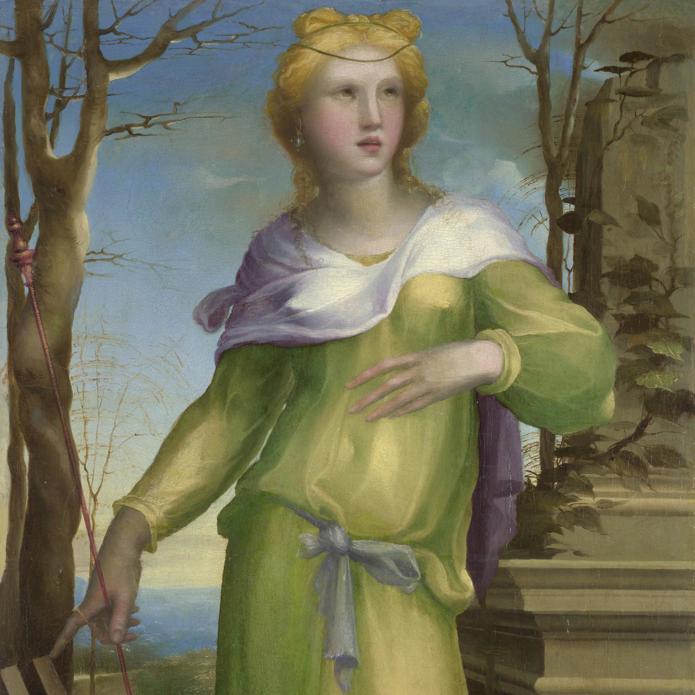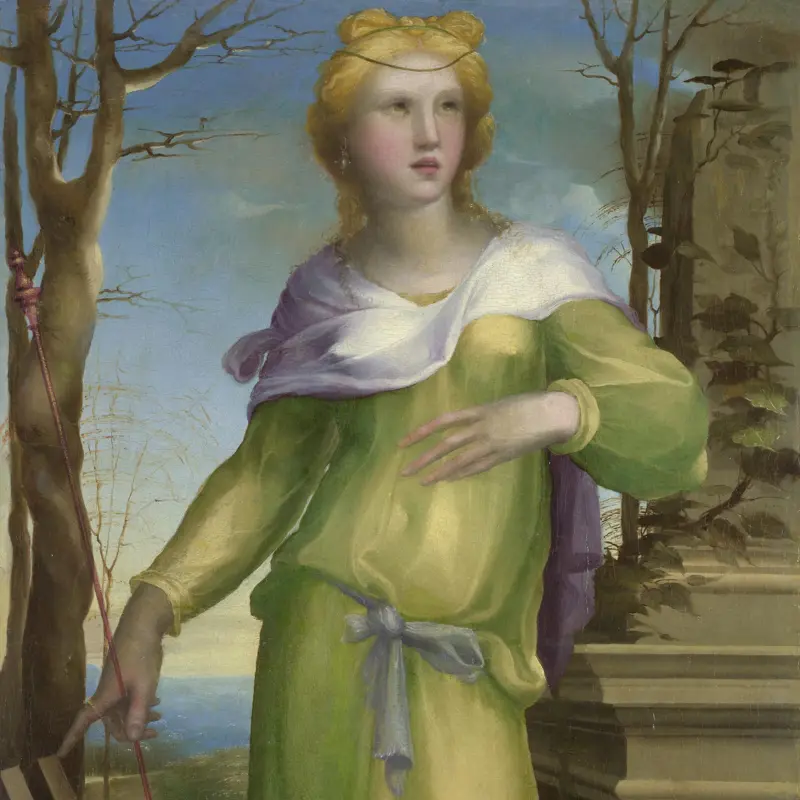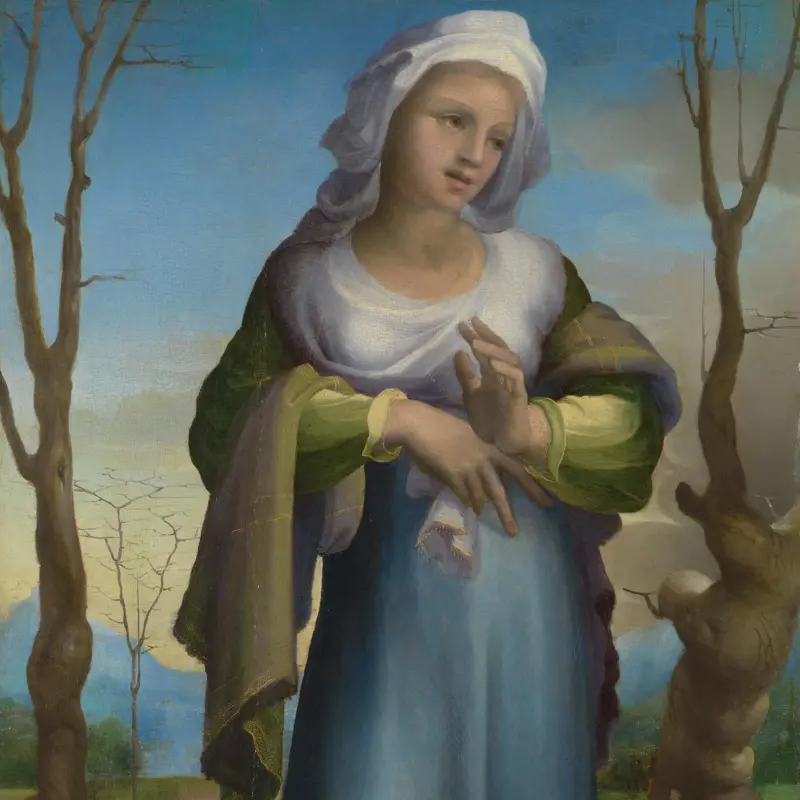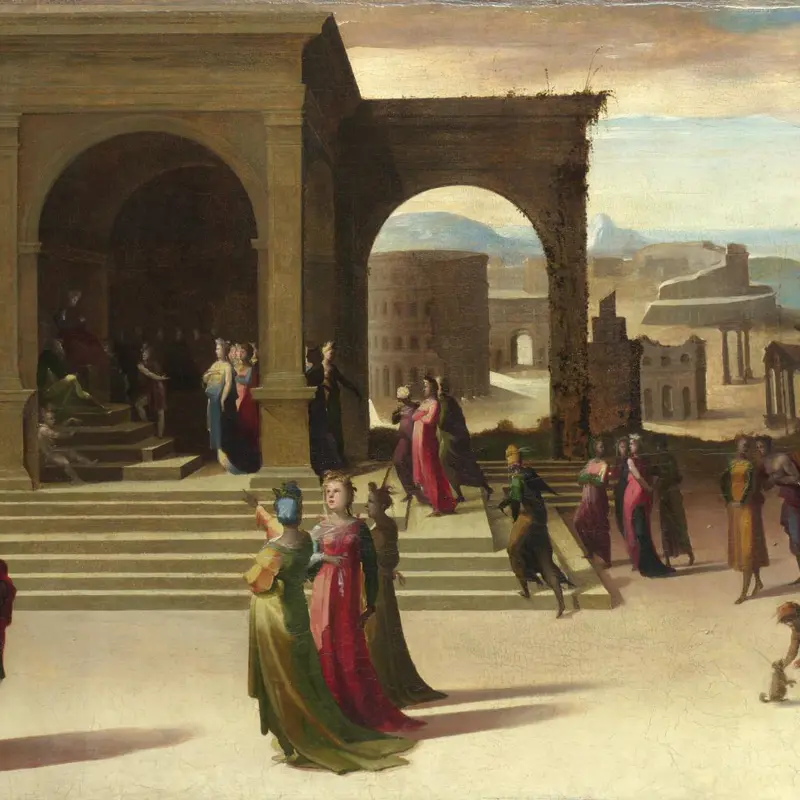Domenico Beccafumi, 'Marcia', about 1519
About the work
Overview
This panel is part of a series of decorations Beccafumi painted for the bedchamber of Francesco di Camillo Petrucci (b.1489), a wealthy merchant and landowner who was nephew of the ruler of the republic of Siena. The decorations were probably made to coincide with Francesco’s marriage to Caterina di Niccolò Mandoli Piccolomini in 1512.
Three of the surviving panels showed Roman heroines – Marcia, Tanaquil and Cornelia. They probably originally decorated the back of a bench seat. Marcia personified the virtues of marital fidelity and wifely obedience as well as fruitful maternity. She was first married to Marcus Porcius Cato and then at his own suggestion married his friend Hortensius. When Hortensius died Marcia returned to Cato. The paintings of the three heroines each contain a Latin couplet in gilt lettering, most likely composed by the scholar who devised the decorative scheme for the bedchamber.
Key facts
Details
- Full title
- Marcia
- Artist
- Domenico Beccafumi
- Artist dates
- 1484 - 1551
- Part of the series
- Classical Heroines from a Sienese Bedchamber
- Date made
- about 1519
- Medium and support
- oil on wood
- Dimensions
- 92.1 × 53.3 cm
- Acquisition credit
- Acquired by application of the 1956 Finance Act, 1965
- Inventory number
- NG6369
- Location
- Room 6
- Collection
- Main Collection
- Previous owners
- Frame
- 19th-century English Frame
Provenance
Additional information
Text extracted from the ‘Provenance’ section of the catalogue entry in Cecil Gould, ‘National Gallery Catalogues: The Sixteenth Century Italian Schools’, London 1987; for further information, see the full catalogue entry.
Bibliography
-
1967The National Gallery, The National Gallery: January 1965 - December 1966, London 1967
-
1987Gould, Cecil, National Gallery Catalogues: The Sixteenth Century Italian Schools, London 1987
-
2001
C. Baker and T. Henry, The National Gallery: Complete Illustrated Catalogue, London 2001
About this record
If you know more about this work or have spotted an error, please contact us. Please note that exhibition histories are listed from 2009 onwards. Bibliographies may not be complete; more comprehensive information is available in the National Gallery Library.
Images
About the series: Classical Heroines from a Sienese Bedchamber

Overview
These two Roman heroines, Marcia and Tanaquil, are part of a series of painted panels that decorated the bedchamber of Francesco di Camillo Petrucci (b. 1489), a wealthy merchant and landowner who was nephew of Pandolfo Petrucci, ruler of the republic of Siena. Celebrating themes of love, fertility, and wifely and maternal virtue, the decorations were probably made to coincide with Francesco’s marriage to Caterina di Niccolò Mandoli Piccolomini in 1512 and completed in about 1519.
Six of the paintings still exist, though they are in different collections. Three show Roman heroines (the one not in the National Gallery depicts Cornelia) and two feature the Roman festivals of Lupercalia and Cerealia, which were associated with male fertility and female fecundity. A painting of Venus and Cupid probably decorated the bedhead. The paintings of the three heroines and Lupercalia each contain a Latin couplet in gilt lettering likely to have been devised by the scholar responsible for the decorative programme.



